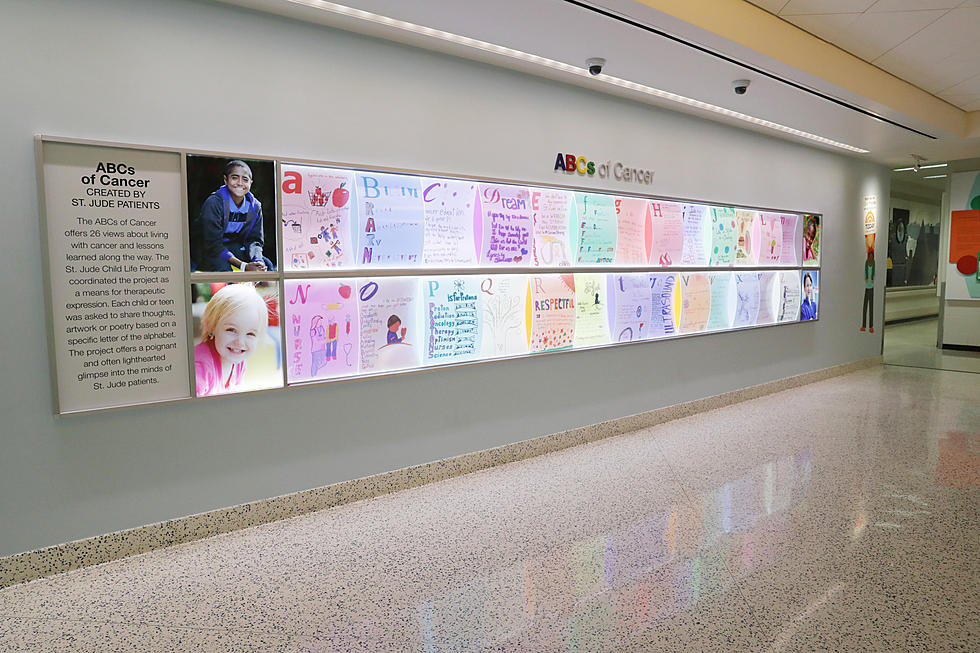
No Shave November: Myelofibrosis
During the month of November, the Hawk Morning Show is going unshaven to bring to light some of the rarer forms of cancer that you might not have heard of before.
According to the official No-Shave Facebook page and website “No-Shave November is a unique way to raise cancer awareness. The goal is to grow awareness by embracing our hair – which many cancer patients lose – and letting it grow wild.
Each Friday during the month of No-Shave November, Glenn and I will post pictures of our unshaven selves and share with you information on various forms of cancer and the struggles those with each form of cancer face.
This week, we’re introducing you to a nasty little booger called Myleofibrosis.
Myleofibrosis is the form of cancer that my dad was diagnosed with in the fall of 2011 and is a disorder of the bone marrow, in which the marrow is replaced by scar (fibrous) tissue. This means that my dad’s bone marrow was dry. Bone marrow is basically a factory where various blood cells are produced and blood cells are a necessity to live. When a person’s bone marrow is dry, it means they’re not making the blood cells they need to survive. Obviously, this is bad.
People with diagnosed with myleofibrosis experience most of these symptoms:
• Tiredness, weakness, or shortness of breath.
• Fullness, discomfort or pain in the left upper area of the abdomen.
• Fever, caused by inflammation or infection
• Night sweats, caused by inflammation
• Weight loss or malnutrition, caused by inflammation and an enlarged spleen pressing on the stomach and bowels
• Bone pain
• Itching, caused by a chronic state of inflammation
• Easy bleeding or bruising, as a result of low platelet counts or otherwise compromised blood coagulation
• Susceptibility to infection, as a result of low white blood cell count or diminished production of antibodies
• Joint pain, caused by gout.
• Portal hypertension. Portal hypertension can lead to dilated veins within the stomach and esophagus, which may rupture and bleed. Liver function may be compromised as well.
• Abnormal growth of blood forming cells outside of the bone marrow can occur in different parts of the body, including lymph nodes, lungs, and spinal cord, causing symptoms in these areas. EMH occurs when blood-forming cells leave the bone marrow and settle in other organs.
Many people diagnosed with myleofibrosis end up acute myeloid leukemia which is a serious blood and bone marrow cancer which progresses quickly. When a person does get acute myeloid leukemia, it’s often difficult to treat and can be rapidly fatal.
Is myelofibrosis hereditary? Who's most likely to get it?
Most often this cancer hits people between the ages of 60 and 70, although my dad was in his late 50s when his was discovered and by that time it was believed he’d had it for a few years. Doctors believe that exposure to petrochemicals (like benzene and toluene) and ionizing radiation may increase the risk of developing this form of cancer.
What causes myelofibrosis?
No one knows exactly what triggers the start of myelofibrosis. Doctors say that in most cases myelofibrosis is not inherited—you can’t pass it on to your children and you didn’t get it from your parents. Recently though, researchers have discovered that this disease might be caused by gene mutations (changes in DNA) that are acquired (meaning they’re not passed down).
Are there treatment options? If so, what are they?
There are several forms of treatment for myelofibrosis. Researchers hard at work to develop medications that target the JAK2 gene mutation that's thought to be responsible for myelofibrosis. The first of these medications approved by the Food and Drug Administration is ruxolitinib (Jakafi). Ruxolitinib and the other medications being developed and tested in clinical trials have been helpful in decreasing enlarged spleens and reducing symptoms associated with myelofibrosis.
Another treatment option that's a bit more risky is a stem cell transplant, which is what my dad had because his cancer was so progressed and because we didn't want to play around- we wanted to go right to the treatment that we knew had actually saved lives and wasn't experimental with only the chance of saving my dad's life. A stem cell transplant is the only treatment that has the potential to cure myelofibrosis. But it also has a high risk of life-threatening side effects. Prior to a stem cell transplant, also called a bone marrow transplant, patients receive very high doses of chemotherapy or radiation therapy to destroy diseased bone marrow. Then they receive infusions of stem cells from a compatible donor. After the procedure, there's a risk that the new stem cells will react against your body's healthy tissues, causing potentially fatal damage (graft-versus-host disease) which is what happened to my dad. He also experienced organ damage as well as damage to his vision that's left him virtually blind. However, he was matched with another donor, given another stem cell transplant and that one took. And today, my dad is alive and that's the greatest thing in the world.
More From 98.1 The Hawk




![St. Jude ABCs of Cancer: M Is for Miracle, Praying for a Miracle [GALLERY]](http://townsquare.media/site/498/files/2021/02/abcs.jpg?w=980&q=75)




